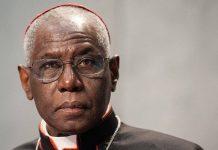The Jesuits carried out an apostolate with the Hurons of Canada, who were almost exterminated by the Iroquois.
Newsdesk (31/07/2022 3:00 PM, Gaudium Press) During these days in which the Pope is visiting Canada, and in which the Indigenous presence in all the celebrations was very marked, Pablo Ginés wanted also to remember, in ReligionEnLibertad, the Canadian Martyrs, eight Jesuits to whom the country owes much for its Catholic faith. They were murdered by the Iroquois in southern Canada between 1642 and 1649. The Jesuits were doing apostolate with the Hurons, who were almost exterminated by the Iroquois.
Ginés draws on the classic book on the Huron Mission by the German Jesuit, Adolfo Heinen, Entre los Pieles Rojas del Canadá: Historia de la Misión de los Hurones y de sus misioneros los ocho santos Martires Canadienses de la Compañia de Jesús, published in 1930 and now reissued by the Major Foundation.
He recalls that Father Isaac Jogues was taken prisoner by the Iroquois in 1642, and when captured had almost all his fingers shattered. This priest recounted that he saw how the Iroquois roasted in slow fire small, still living children of the Algonquian tribe. He saw how Jesuit René Goupil, the first Jesuit martyr in Canada, was killed.
Father Jogues, while working as a slave, managed to baptize 70 Indiginous who were prisoners of the Iroquois. Feeling that he was going to be killed, he managed to escape to France with the help of a Dutch merchant.
Jogues returned to Canada in 1644 and succeeded, thanks largely to his knowledge of the Iroquois language, in negotiating peace between the Hurons and their French allies and the Iroquois.
Believing himself to be protected by that peace of 1645, Fr Jogues was sent to Iroquois territory to found a mission. But they were once again on the warpath and blamed the “black robes” (Jesuits) for spreading diseases and plagues on the crops.
Jogues was enslaved and tortured again; they cut pieces of flesh from his arms and shoulders, eating them in front of him. Finally, on October 18, 1646, they put an axe through his head, and then cut off his head and stuck it on a spear. They did the same to his fellow layman, Jean de La Lande. That blood would bear fruit directly there: that particular tribe, the Mohawis, would convert two decades later. Even their murderer would become a Christian.
Iroquois War Against the Hurons
In 1647, with Dutch Protestants as arms suppliers, the Iroquois attacked the Hurons, who had little French support. As a consequence, the Hurons were practically exterminated as a people. Many of them were already Christians or Catechumens. Five priests of the 18 Jesuits working in the Huron missions were martyred over the next two years.
Fr Anthony Daniel died in 1648 of arrow and bullet wounds in his mission chapel.
Fr Jean de Brébeuf and Fr Gabriel Lalemant were murdered by the Iroquois in March 1649 while caring for the sick and wounded in a Huron village. But before killing them, the Iroquois subjected them to sadistic torture: they pulled out their nails, beat them with clubs, cut off their hands while piercing them. They showered them with boiling water, in an act to mock Christian baptism, while uttering explicit taunts against the sacrament of Christian initiation.
Father Brébeuf, who insisted on speaking to them about the Christian God despite his wounds, first had his nose cut off and then his lips. They finally tore out his heart. Fr. Lalemant’s eyes were torn out and coals were dipped into the already empty sockets. They also tore out his still beating heart, swallowed it raw and drank the priest’s blood in a cruelty with satanic airs.
After having murdered these priests, the Iroquois wanted to make a bolder attack on the Hurons’ Mission of St. Mary, which was, so to speak, the Jesuits’ headquarters in Canada and their last base in Huron territory.
The Hurons offered a strong resistance. Casualties were numerous on both sides, but finally the Iroquois withdrew, but not before setting fire to everything in their path, whether crops or villages. The prisoners were burned. The plantations burnt, the Jesuits made every effort to feed the people. In the end, they had to abandon this mission.
Two Other Jesuit Martyrs were Fathers Noël Chabanel and Charles Garnier.
They were on mission with the Tobacco Nation, who gathered in eight strong villages that had not been part of the fighting.
But the Iroquois came to them.
Killed by a Convert
Then the Tobacco Nation prepared to face them, but the Iroquois tricked them and headed for the Mission of St. John, which had been left unprotected. Fr Garnier was shot dead as he was quickly baptizing the catechumens before they were killed. As he was still moving amongst them, the Iroquois warriors struck him twice on the head.
On the day of the attack Fr Chabanel was not at this place, as he was travelling with a “Tobacco” group. At night they were attacked by Iroquois and all dispersed. Fr Chabanel was never found, but some time later an apostate Huron said that he had killed him himself because, since he had become a Christian, he had suffered many misfortunes.
In the summer of 1650, the remaining Jesuits and 300 Hurons made a 300-league journey from their traditional territory to Quebec as the only way to survive. Then 400 more Hurons arrived; ten years earlier, the Hurons had numbered 10,000.
Today, this ethnic group numbers about 3,000 people, and they attend Mass at the parish of Our Lady of Loreto in Wendake, Quebec.



































